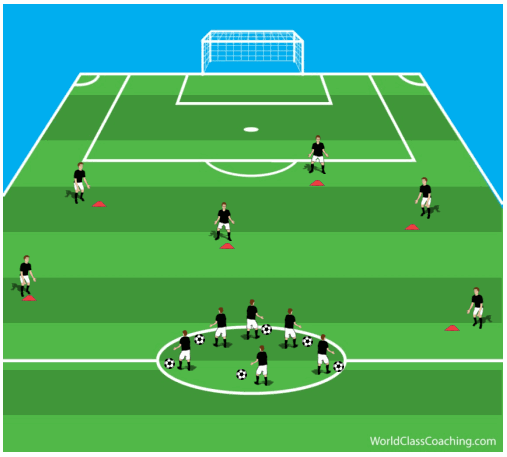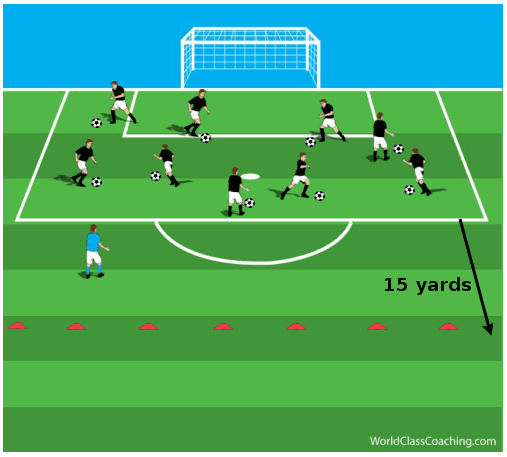Using a Dribbling, Passing and Receiving Drill to Develop Aerobic Endurance
By Justin Cresser
Today’s activity is a simple exercise that develops Aerobic Endurance while working on dribbling, passing and receiving techniques. One of the good things about this drill is that it can also be used as a warm-up routine. If you do decide to use it as a warm-up activity, ensure that you incorporate dynamic stretches for the major muscle groups (hamstrings, quadriceps, etc.) during the rest periods between repetitions.
This activity uses the space between the halfway line and the top of the 18-yard box for the playing area. Divide your squad into two equal groups. Lay out several cones (the number of cones will be equal to the number of players in each group) across the playing area at random. However, each cone should be at least 10 to 15 yards from the nearest cone. For the purpose of this article, let us assume each group has 6 players; we have therefore placed 6 cones across the playing area.
Have all the players in one group stand inside the centre circle with a ball each. Have each player in the second group stand behind a different cone (Figure 1).

When ready, direct the players in the centre circle to dribble at speed towards

